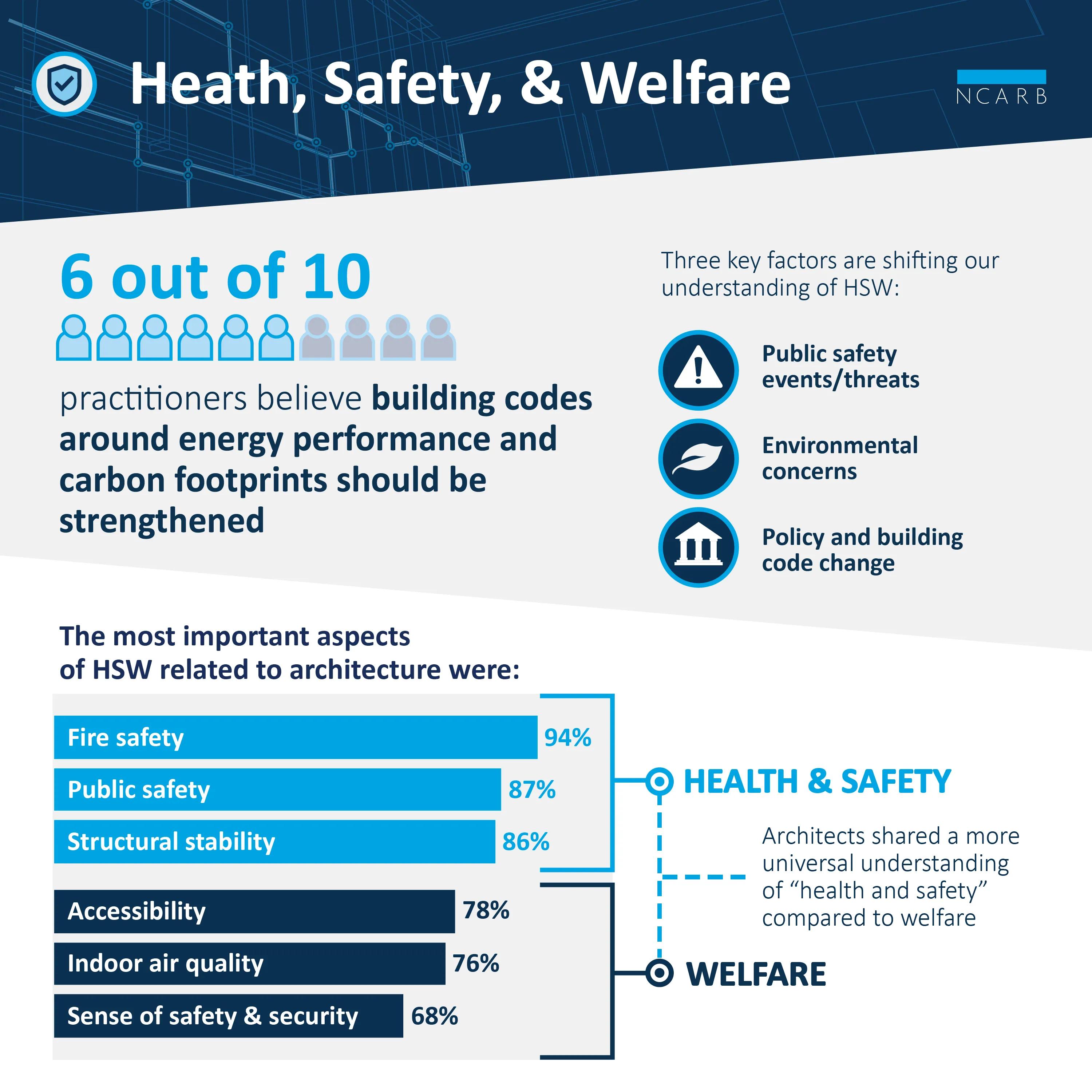Architects are responsible for protecting the health, safety, and welfare (HSW) of the public—typically the people in and around the buildings they design. But the boundaries of that HSW responsibility can be difficult to define, especially as expectations around sustainability, fair labor practices, and global impact evolve. Through our Analysis of Practice study conducted in 2022, we surveyed thousands of architects and other practitioners to better understand perceptions around health, safety, and welfare today, as well as how these perspectives may shift in the near future.

Distinguishing Health and Safety From Welfare
While HSW is often treated as a singular concept, responses to NCARB’s Analysis of Practice indicated a clear distinction between the aspects of architecture that fall under health and safety, compared to the aspects that fall under welfare. However, respondents were more likely to agree on the meaning of health and safety than they were to agree on the meaning of welfare.
The aspects of health, safety, and welfare that respondents identified as most important to an architect’s work were:
Health and Safety
- Fire safety
- Code compliance
- Public safety
- Structural stability
- Protection from loss of life or property
Welfare
- Accessibility and universal design
- Indoor air quality
- Code compliance
- Sense of safety and security
- Access to sunlight
How HSW Is Evolving
The Analysis of Practice also explored what factors are driving the evolution of HSW, as well as how building codes should be adjusted to align with changing expectations. According to practitioners, the key factors shifting our understanding of health, safety, and welfare over the past decade include:
- Public safety events/threats
- Environmental concerns (including sustainability and resilience to natural disasters)
- Administrative policy and/or building code changes
Respondents indicated that building codes should be strengthened in several areas, which can be combined into two core categories:
- Environmental concerns, including energy performance, carbon footprint, and resiliency to extreme temperatures and flooding
- Building materials, including the overall quality of materials as well as the origins and lifecycle of the material production process
Demographic Differences
Overall, Analysis of Practice respondents were largely in agreement on questions related to health, safety, and welfare—regardless of demographic group. However, certain demographic groups felt more strongly on specific topics.
- Recently licensed architects were 37 percentage points more likely to indicate that building codes related to material origins and lifecycle should be strengthened compared to architects who had been licensed for 20+ years.
- Respondents from underrepresented groups in the profession, especially women and people of color, were more likely to support strengthening building codes in all areas.
- Especially true for women in relation to codes around carbon footprints
- And for Black or African American respondents in relation to codes around fire safety, disease mitigation, community consultation, and flood resiliency
What’s Next?
Over the coming years, NCARB will be exploring the next iteration of the path to licensure. Findings from the Analysis of Practice will inform what knowledge, skills, and tasks should be required for licensure, as well as how NCARB should measure them. We look forward to sharing more insights from other sections of the Analysis of Practice with you in the months ahead.
About the Analysis of Practice
In 2022, over 19,000 individuals across the architecture, engineering, and construction (AEC) industry participated in NCARB’s once-in-a-decade Analysis of Practice study. Through a series of short questionnaires, focus groups, a final extensive survey, and more, NCARB gathered key insights about the field of architecture that will help shape the licensing model of the future.
Results from the study will help us better understand the ecosystem of architectural practice and may lead to changes to NCARB’s national licensing programs and standards of the future.
